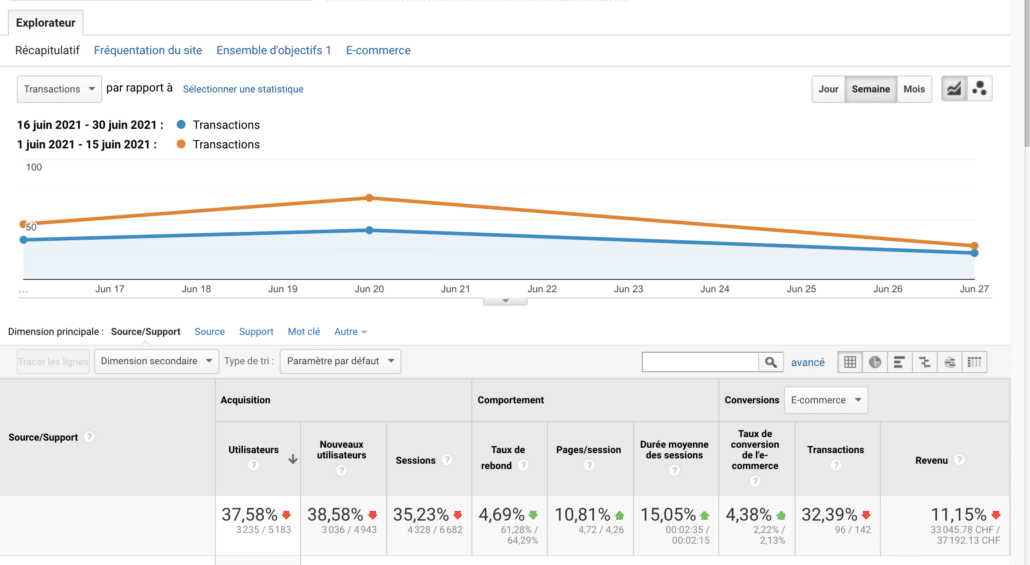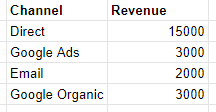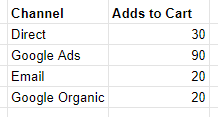Join
"The Marketing Mixtape"
Get the latest digital marketing insights straight to your inbox.
Digital marketing attribution in a cookie-free world

The development of new privacy legislation has made it harder for advertisers to measure the impact of their campaigns. This article presents some solutions.
The digital privacy landscape is evolving rapidly to the point that regulatory compliance has become notoriously difficult for many businesses to navigate. Recent developments in privacy legislation like GDPR has compelled tech giants like Facebook and Apple to adopt tracking transparency initiatives to ensure they stay on the right side of the law. While the importance of consumer privacy cannot be understated, this does present some caveats for businesses.
This has also made it difficult for advertisers to measure the impact of their campaigns and optimise their investment accordingly. In particular, advertisers rely on cookies to follow users through the web and tailor their ads and targeting according to their interests. Nonetheless, new privacy legislation and technology limits digital marketing attribution in this manner, which means advertisers cannot easily determine which channels are the most profitable.
This has primarily impacted those marketing on platforms that rely exclusively, or almost exclusively, on cookies. More specifically, the problem can be distilled into three main issues:
In this article, we will propose some potential solutions to the above issues, which we hope will help advertisers get their campaigns and attribution models back on track.
Solution #1
Google Analytics tracks all users who come to the website, and it also tracks all conversions that happen on the website. The platform also attributes conversions to the various different channels, but while this is good for advertisers, the channel attribution is often inaccurate.
By default, Google uses the last-click attribution model, which means that all conversions are attributed to the last touchpoint. Furthermore, Google Analytics cannot attribute conversions based on views, which means that users who saw an ad and converted without clicking on it are not counted as conversions.
Fortunately, Google Analytics can effectively measure the total revenue generated during a specific period. With one of our clients, we took a month where performance was expected to be stable and ran ads during the first half of the month and stopped them during the second half. Then, we measured the difference on overall sales.

Here were the results:
The orange line shows the transactions for the first half of the month, during which the ads were active, while the blue one shows the transactions for the second half, when the ads were inactive. This clearly shows the impact of the campaign.
In conclusion, this method involves switching on and off the different marketing levers to get a big-picture look at the overall impact on the bottom line.
Solution #2
In the previous solution, we completely shut down one channel to measure its impact on global sales. This is necessary in certain cases, such as those when generating a sale depends on users coming to the website via multiple touchpoints.
In another solution, we will take an e-commerce website as an example. The conversion funnel looks something like this: view product, add to cart, purchase. While it might require multiple touchpoints to make a purchase, it will usually take less ‘nudging’ to add a product to the cart.
Therefore, we can infer the importance of an advertising channel by modelling the sales based on items added to the cart, for example. While the data might be different, the situation is the same.
The client launched a new product, and there was only one channel active. Because of this, all sales should be attributed to that channel. Without that channel, no one would even know that the product exists.
In this case, Google Ads was the only active channel, but Analytics attributed most of the revenue to the ‘Direct’ channel.

When we look at the products added to the cart, however, the situation was a lot more balanced. This told us that Google Ads was really the most important channel.

We then calculated the revenue weighted by the items added to the cart. In fact, we found that 9,937 Fr. worth of sales was incorrectly attributed to the Direct channel, when they really came from Google Ads.

In conclusion, you can use a lower-level conversion to model the totality of your revenue per channel.
Solution #1
One of the most notable developments in the wake of GDPR is that consumers have the right to choose who has access to their browsing data and for what purposes. In practice, it means we cannot easily follow users around the web and retarget them with our ad campaigns. To overcome this limitation, we need to find a way to retrieve their email addresses. This means giving them a compelling reason, such as a great newsletter or value-adding gated content.
Users need to see a benefit before they give you their personal information and, if they do, digital marketing attribution becomes far easier. To do this, every business must be completely transparent regarding their reasons for asking for such data, and there needs to be something in it for potential customers.
If you are able to convince users to give you their email addresses, you can add them to your advertising channels and retarget your ads accordingly. In a cookieless world, the advertisers with the most first-party data will win.
Solution #2
One of the first things advertisers should do, if they have not done so already, is to upload all their existing client data, that they have explicit permission to hold, to their various advertising channels. That way, you can retarget them with your ads, and not only via email. This is a very important strategy for businesses that rely heavily on repeat purchases.
In addition to being a highly effective retargeting strategy for reaching qualified sales leads, it also facilitates the creation of lookalike audiences. A lookalike audience is any audience that is composed of users with similar characteristics to your existing customers. For example, you can create a lookalike audience out of your social media followers, website visitors, or email subscribers. This way, the advertising channels will find people who are most similar to your existing customers, rather than those who have visited your website for only a few seconds and may not be interested in your products.
Ultimately, there is no perfect solution for replacing cookies for now. That said, we can still use various techniques for digital marketing attribution and advertising data science.
After all, before the internet, there were no cookies, which means that, in some ways, we need to revert to that era. In other words, we can borrow from some of those techniques, such as shutting down an advertising channel to measure its impact on the bottom line. This is much the same technique as advertisers used before the internet.
While we cannot rely on cookies any longer for targeting users, that does not mean advertising giants like Facebook and Google do not still have enormous potential. In fact, there are many more ways to target users based on interest. For example, with Google, you can:
In some ways, Facebook offers some even more fine-tuned opportunities, such as the ability to target people based on relationship status, birthdays, or parental status.
Although our remarketing and digital marketing attribution capabilities may have been reduced by legislation like GDPR, those we are able to target will be more precise and more relevant to advertisers.
comtogether specialises in data-driven digital marketing. Our tailored solutions include content marketing, growth-hacking, and all data and analytics. Get in touch today to schedule a free strategy session.
Get the latest digital marketing insights straight to your inbox.
